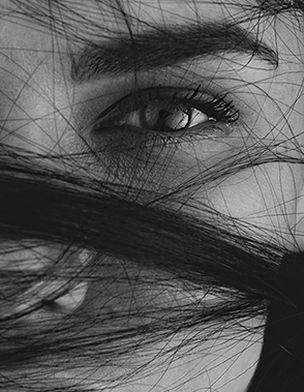Blepharoplasty FAQ’s

Blepharoplasty, or eyelid surgery, is a surgical procedure to improve the appearance of the eyelids. Blepharoplasty can be performed on the upper lids, lower lids or both. It can be performed as a stand-alone procedure, or in combination with other facial cosmetic procedures.
You may be considering a blepharoplasty to improve your appearance or rejuvenate the skin surrounding your eyes. Other patients opt for eyelid surgery when they are experiencing functional issues with the eyelids, such as drooping that is affecting your vision.
Here are the most common questions asked during a consultation for Blepharoplasty with Dr. Kenneth Bermudez, MD.
How Do I Know if I am I a Candidate for a Blepharoplasty?
Blepharoplasty is for patients who have loose skin or bulges of fat in the eyelid. Some patients may complain about their eyelids feeling heavy at the end of the day. By reducing the amount of redundant skin you will alleviate the “heavy” feeling and will appear more rested and youthful.
Lower blepharoplasty removes bulging fat and/or skin of the lower eyelid. The bulging of fat is mostly genetic and starts to occur by the early forties. The chief complaint among patients with these issues is that they look tired, less youthful and unwell. If you have excess skin below the eye area or puffiness due to a bulging fat pad, then you could benefit from a lower blepharoplasty.
How Painful is the Procedure and How Long is the Recovery?
Blepharoplasty is performed with anesthesia. Depending on your individual case, either IV sedation or local anesthesia may be used. You should feel very little discomfort during the procedure.
During your healing period, you should expect some swelling, bruising and discomfort. This can all be controlled with oral pain medication, cold compresses, and lubricating eye ointment. In rare cases irritation at the incision site may also occur.
How Soon Can I Return to Work?
You can work from home by computer or phone the day after your blepharoplasty. The sutures will come out in one week. There can be swelling and bruising around the eyes. You can wear eyeglasses to hide the sutures, or if you do not mind if someone sees you like that, then you can return to work after three days. Otherwise plan on taking about a week off of work.
Will an Upper Blepharoplasty Change the Shape of My Eye?
Your eye as a whole will look different, and better. Your eyes will also appear larger and more open, and the shape slightly different.
Where are the Incisions Made for the Upper Blepharoplasty?
Blepharoplasty incisions are made in the crease of the upper eyelid. Sometimes they extend a bit to the outside of the eyelid into a crow’s feet crease.
After healing from your surgery your eyelid scars are typically only visible when your eyes are closed. Without makeup, they may appear slightly darker than the rest of the eyelid. Only someone who knows what to look for will notice.
If your scarring is a bit darker or more noticeable than you would like, laser treatment can correct it, making the scar closer to your natural skin color so it blends in.
Can Laser Resurfacing Tighten My Skin and Give Me the Same Result as a Blepharoplasty?
Lasers can tighten the skin a bit, not nearly as much as a blepharoplasty. But laser resurfacing can smooth the fine lines and wrinkles in the skin. That is something that a blepharoplasty does not do. Some patients may benefit from both surgery and laser resurfacing.
If you have more questions about upper or lower blepharoplasty, or you would like to consult with Dr. Bermudez, contact Kenneth Bermudez, MD at (415) 712-1800.











